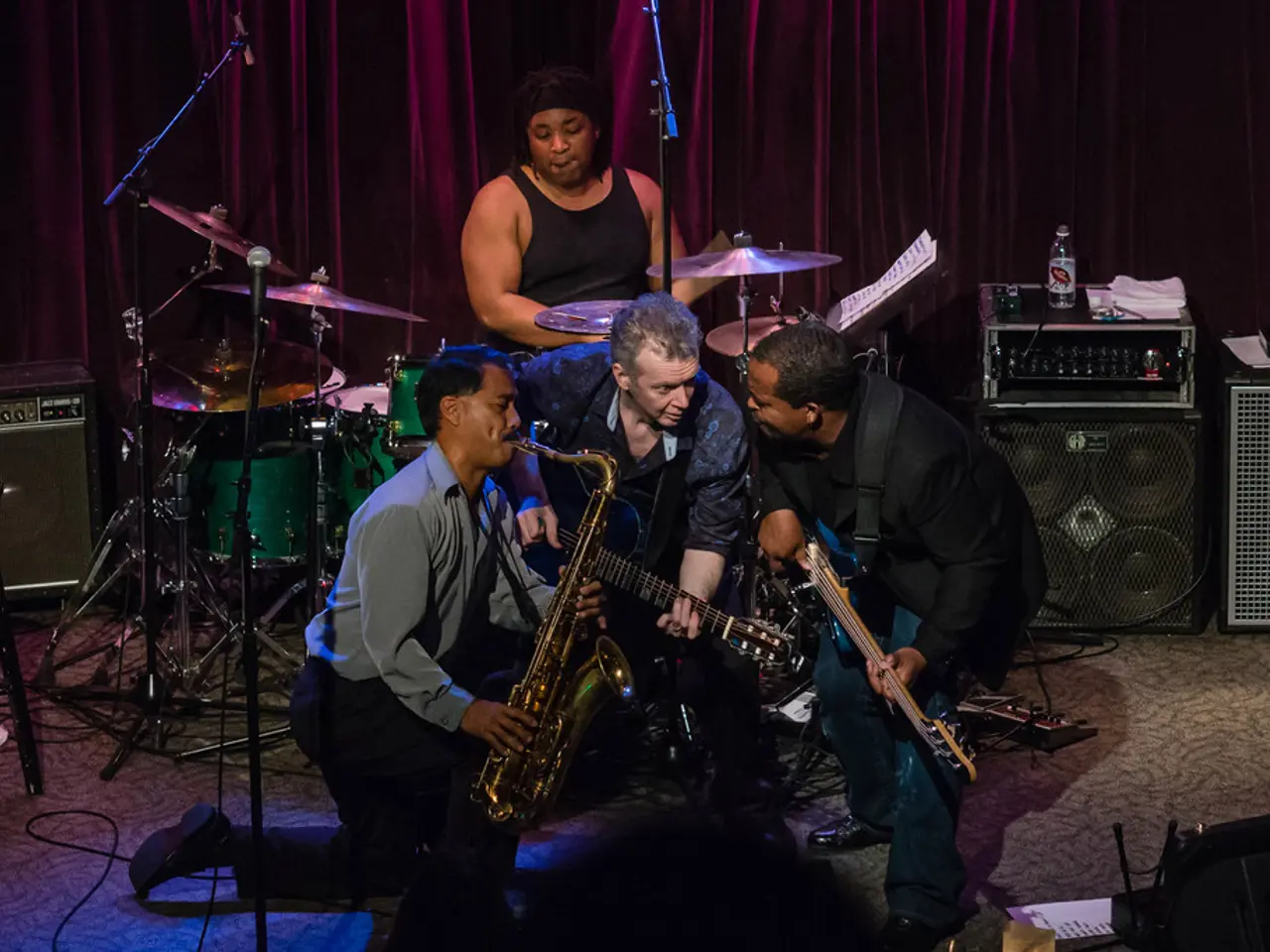Brain Responses to Music in a Fraction of a Second: Explaining Why You Keep Repeating Tracks
Music, a universal language, has long been a source of joy, emotion, and connection for humans. But did you know that it also plays a significant role in shaping our brains? Here's a look at the fascinating ways music interacts with our neurology.
Even passive listening to music, particularly complex musical structures, creates new neural pathways over time. This process is most evident when we engage attentively with the music we hear.
The pleasure we derive from music doesn't solely come from the musical climax but from the moments of anticipation leading up to it. It's during these moments that our brains experience a dopamine spike.
Certain types of music may even increase serotonin production, with potential implications for mood disorders.
The amygala, the brain's emotional processing center, shows immediate activation patterns that begin shifting emotional states independent of the listener's baseline mood.
Music performed in group settings appears to increase oxytocin, a "bonding hormone," potentially explaining music's role in social cohesion.
Advanced neuroimaging has revealed that music involves the simultaneous activation of memory centers, emotional processing, and motor planning systems. For instance, the auditory cortex breaks down sound into components of pitch, volume, and tone, while the hippocampus starts searching for matching patterns in memory.
Regular musical engagement physically reshapes neural architecture through the process of neuroplasticity. This is evident in musicians, who often show enlarged auditory cortices, enhanced motor areas corresponding to practiced movements, and greater grey matter density in regions associated with sight-reading and auditory processing.
Longitudinal studies of children undergoing musical training have revealed increased volume in the corpus callosum, which facilitates communication between the brain's hemispheres.
Brain scans of individuals who regularly listen to structurally complex music show enhanced connectivity between auditory regions and the frontal lobe, associated with higher cognitive functions.
Relaxing music can reduce levels of the stress hormone cortisol by up to 25% in controlled studies.
Perhaps most striking is how this process occurs pre-consciously, before awareness even registers.
In summary, music activates multiple brain regions that support auditory processing, emotion, memory, reward, motor control, and cognition, influencing human cognition, emotion, memory, and behavior in complex ways.
Key brain areas involved include the auditory cortex, orbitofrontal cortex, insula, hippocampus and amygdala, nucleus accumbens and ventromedial prefrontal cortex, and motor cortex.
Music impacts human cognition and behavior by enhancing emotional regulation, influencing memory, modulating behavior and social bonding, and supporting cognitive functions.
Furthermore, music therapy exploits these activations to aid mental health recovery, cognitive decline prevention, and emotional self-regulation. Understanding the neurological mechanisms of music has led to increasingly sophisticated applications for cognitive enhancement and mental health, such as focus enhancement through neural phase-locking and emotional regulation through neurochemical management.
Lastly, it's worth noting that musical memories are stored differently than many other types of information, in remarkably resilient neural networks that can withstand even severe cognitive decline.
References:
[1] Juslin, P. N., & Västfjäll, D. (2008). Handbook of music and emotion: Theory, research, applications. Oxford University Press.
[2] Koelsch, S. (2014). The neuroscience of music: cognitive, affective, and social perspectives. Oxford University Press.
[3] Salimpoor, V. N., Benovoy, M., Larcher, K., Dagher, A., & Zatorre, R. J. (2011). Anatomically distinct dopamine release during anticipation and reward predicts prediction error and subjective emotional experience. Journal of Neuroscience, 31(15), 5577-5589.
[4] Thaut, M. H. (2014). Music and the brain: neurophysiology and clinical applications. Academic Press.
[5] Zatorre, R. J., & Salimpoor, V. N. (2013). Music and the brain: neuroanatomical underpinnings of music perception, production, and emotion. Annual Review of Psychology, 64, 513-535.
Technology can be used to enhance our understanding of music's impact on the brain by facilitating advanced neuroimaging techniques, enabling researchers to visualize the complex neurological processes that occur during music listening and performance. Furthermore, the field of science continues to explore the potential of using music as a therapeutic tool for various medical-conditions, contributing to the overall advancement of health-and-wellness through technology.




